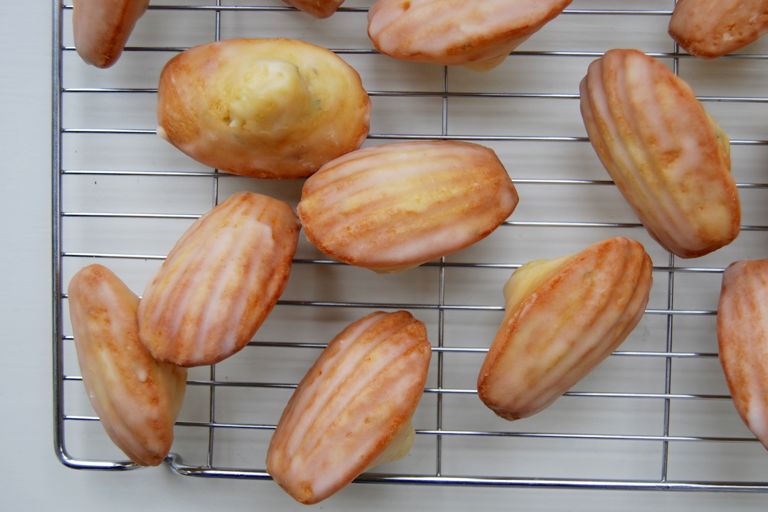Lemon and thyme madeleines with lemon glaze
Perfect, small and delicate, Rachel's herb-scented Madeleines, a traditional French treat, can be served as part of an outdoor, summer time afternoon tea!
It is pretty much a general rule that pastry and I are not friends. I don’t have any trouble making cakes or biscuits, and there are some more, supposedly complicated things in the baking department such as macarons and enriched dough without a food mixer I’ve never had any trouble with. But a basic pastry shell? Many of the basics still elude me.
The reason why my relationship pastry is relevant to a recipe for madeleines comes in a beautiful book on Parisian sweets given to me by my grandfather, full of stunning visuals, historical paragraphs on and classic recipes for different French pastries. The problem is, while it (Sweet Paris by Michael Paul, in case you were wondering) is a fantastic read, approximately 1/3 (the most impressive 1/3) of the recipes elude me. However, there were a few recipes in the book where I had no idea if I had the natural instinct and skill set for (I’m usually a cook, not a baker) without months of practice. One of these was the classic and traditional madeleine, and I’m happy to report that they are much, much simpler to make than you think they are.
Madeleines, a traditional French childhood treat are an example of how while the British usually give the French a hard time, at least from a culinary point of view, they’ve always been so much cooler than us. Where most of Northern England dunk biscuits in their tea, a madeleine is the traditional French dunker of choice. My favourite part of mythology (the book has taught me that most stories behind out favourite French pâtisserie treats come from anecdotes that we’re not all too sure about the accuracy of) is that they get their sea shell shape from their batter originally being baked in scallop shells.
I think they’re perfect, small and delicate to serve as part of an outdoor, Summertime afternoon tea, which is where the inspiration for this particular flavour pairing comes from. My friend Joy Wilson’s first cookbook features a recipe for Lemon-Lime and Thyme Cookies, and they are the biscuit that I used to make the most in my Californian kitchen. I think removing the lime makes the combination so much more English, and delicate for the madeleine. I mentioned I was baking them on Twitter and I got so many Tweets back with different flavour ideas that really proved to me how versatile this French classic really is. Some of the ideas I need to try for future are matcha, lemon curd and vanilla coconut.
Adapted version from Michael Paul’s Sweet Paris,
Ingredients
Metric
Imperial
- 130g of unsalted butter, preferably French
- 3 large eggs
- 1 large egg yolk
- 120g of golden caster sugar
- 1 pinch of salt
- 175g of plain flour, plus extra for dusting
- 1 tsp baking powder
- 1 unwaxed lemon, zest
- 1 tbsp of thyme leaves
- 150g of icing sugar
- 1 tbsp of lemon juice
Method
Get in touch
Please sign in or register to send a comment to Great British Chefs.



